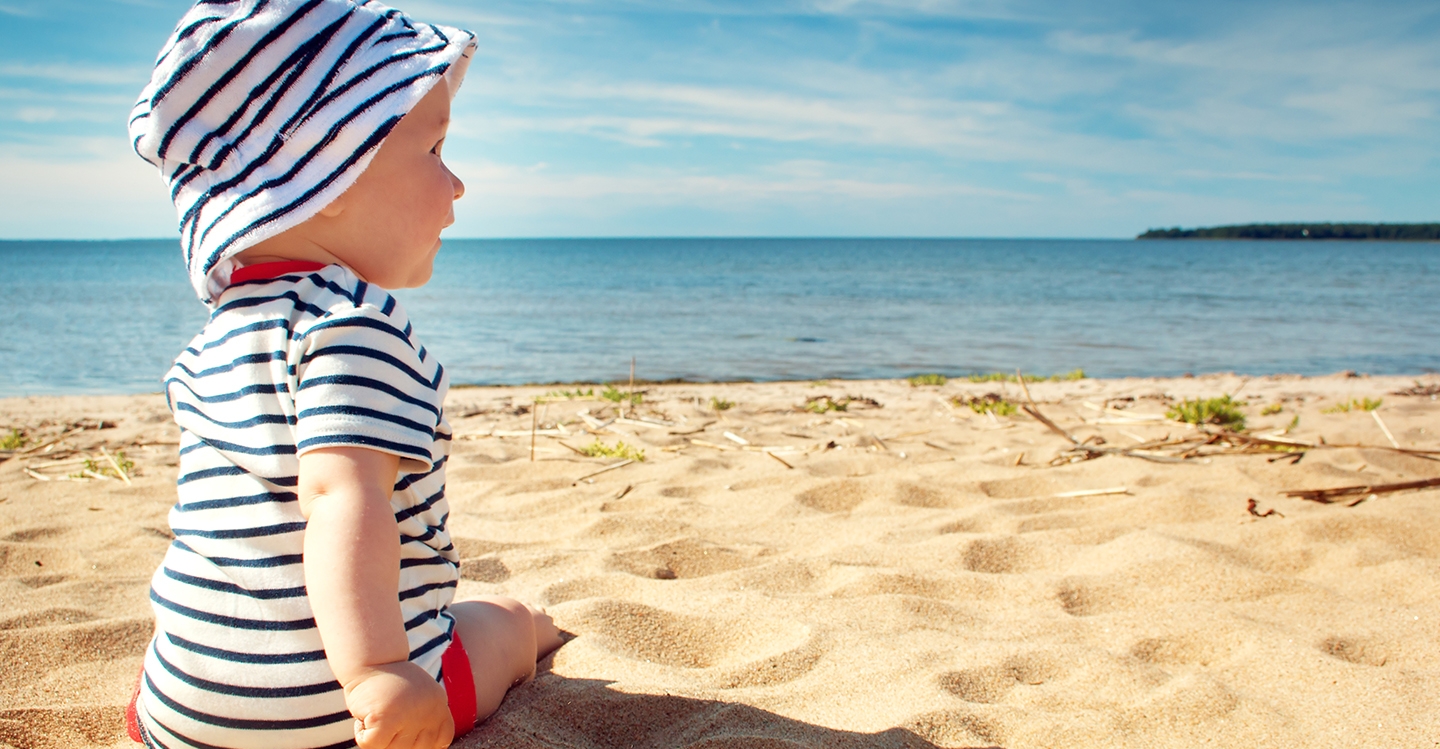Sun safety for babies

We come from the land down under, and we love the outdoors. So naturally, we want to share that with our family, including the newest members.
Due to our geography and lifestyle, Australia has one of the highest rates of skin cancer in the world. But don’t be afraid to go out and enjoy life with your baby – there are some simple things you can do to ensure your bub’s sensitive skin stays safe from the sun as you explore the beautiful parks, pools and beaches out there.
Why is sun safety so important?
In a sun-soaked country like Australia, sunburn is easy to shrug off as part of our culture, or as a rite of passage for children. But did you know that children who are burnt often in their early years are at an increased risk of developing melanoma later in life? Encouraging a culture of proper sun safety early can develop important habits in your children that will help protect them through life, as well as protecting them now while their skin is at its most sensitive and vulnerable.
Cancer Council NSW recommends avoiding direct sunlight entirely when UV levels are 3 or higher, until your baby is at least 12 months old. Luckily, it’s easy to check the UV levels where you are – you can see the levels for your area by using the SunSmart app or the Bureau of Meteorology app or website. Avoiding direct sunlight doesn’t mean staying home, though! Here are some ways you can keep your little one’s skin happy and healthy while you get outdoors.
Sun safety for newborns: 0-6 months
Newborn babies don’t have the protective skin compound melanin in the same amounts as older babies. This makes them more likely to burn quickly when outdoors, so it’s important to be sun safe whenever you leave the house, even if it’s just a short play in the backyard.
Some precautions you can take include:
- Placing mesh coverings on your car windows.
- Dressing your baby in long sleeved and legged lightweight clothing.
- Timing outdoor adventures for when UV ratings are typically lower – usually before 10am and after 4pm are good times to get out and about with a baby.
- Dressing your baby with a wide-brimmed sun hat or bonnet.
- Choosing a pram with an extendable shade cover.
- Creating shaded spaces for longer outings.
Can newborns use sunscreen?
A newborn’s skin is thinner and more absorptive than older babies or adults, and the Australasian College of Dermatologists recommend minimising the use of sunscreen until children are at least 6 months old. For these younger babies, using physical barriers to protect them from the sun is preferable.
Sun safety for infants and toddlers: 6 months+
Once your baby is around 6 months old, you can keep using all your previous barrier strategies, but you can also add sunscreen to your sun safety toolbox.
It’s important to patch test sunscreens before you slip, slop, slap to ensure bub doesn’t have a reaction to your sunscreen of choice. Test it by applying a small amount of sunscreen to a small area of your baby’s skin, such as on the back of their shoulder or inside of their forearm. Watch the area for around 48 hours, and if there is no reaction in that time (think rashes, irritation, redness, or general unsettledness from bub) then you can try it over a larger patch of skin for sun protection.
What to do if your baby gets sunburned
If your baby gets sunburned and you are worried, it’s always best to seek advice from a healthcare professional. Sunburn can be painful and erring on the side of caution is always a good idea.
If you’re confident the sunburn is mild, you can try treatment options such as:
- Avoiding further sun exposure.
- Applying a cool compress over burnt areas.
- Applying a gentle moisturiser (ensure you patch test other gels or creams such as aloe vera gel).
- Avoiding dehydration.
Paracetamol or ibuprofen can be used to manage pain, but like any medication, ensure you only use it as directed by your healthcare professional.
Being outdoors is part of the Australian way of life, but sunburns don’t have to be! Keeping little ones out of direct sunlight can be tricky, especially once they’re on the move, but by having a range of options, you can hopefully keep everyone cool, calm and having fun.
Looking for more ideas on beating the heat with your baby this summer? Check out our article on how to keep your baby cool safely in the heat!


